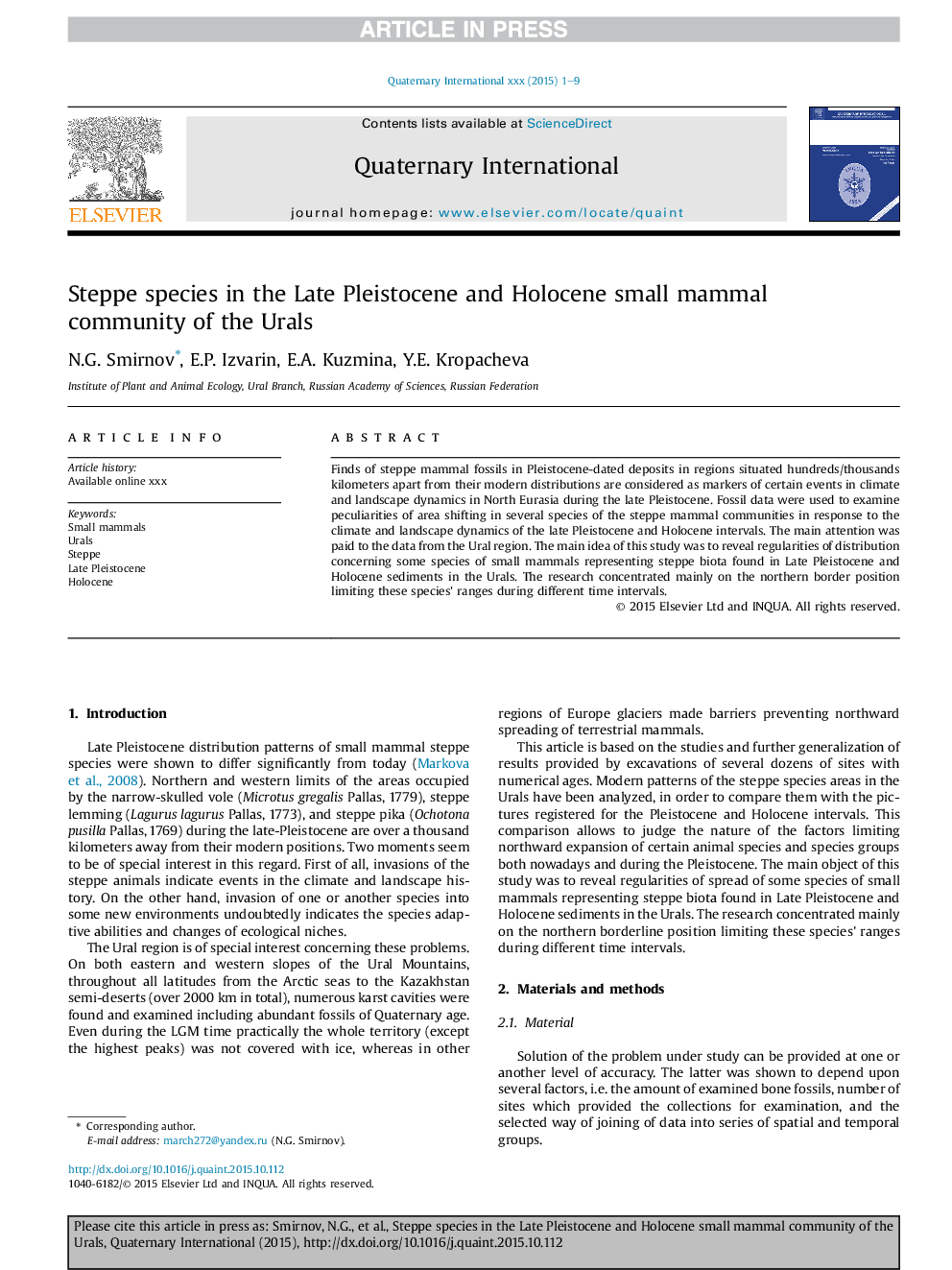| Article ID | Journal | Published Year | Pages | File Type |
|---|---|---|---|---|
| 5113957 | Quaternary International | 2016 | 9 Pages |
Abstract
Finds of steppe mammal fossils in Pleistocene-dated deposits in regions situated hundreds/thousands kilometers apart from their modern distributions are considered as markers of certain events in climate and landscape dynamics in North Eurasia during the late Pleistocene. Fossil data were used to examine peculiarities of area shifting in several species of the steppe mammal communities in response to the climate and landscape dynamics of the late Pleistocene and Holocene intervals. The main attention was paid to the data from the Ural region. The main idea of this study was to reveal regularities of distribution concerning some species of small mammals representing steppe biota found in Late Pleistocene and Holocene sediments in the Urals. The research concentrated mainly on the northern border position limiting these species' ranges during different time intervals.
Related Topics
Physical Sciences and Engineering
Earth and Planetary Sciences
Geology
Authors
N.G. Smirnov, E.P. Izvarin, E.A. Kuzmina, Y.E. Kropacheva,
